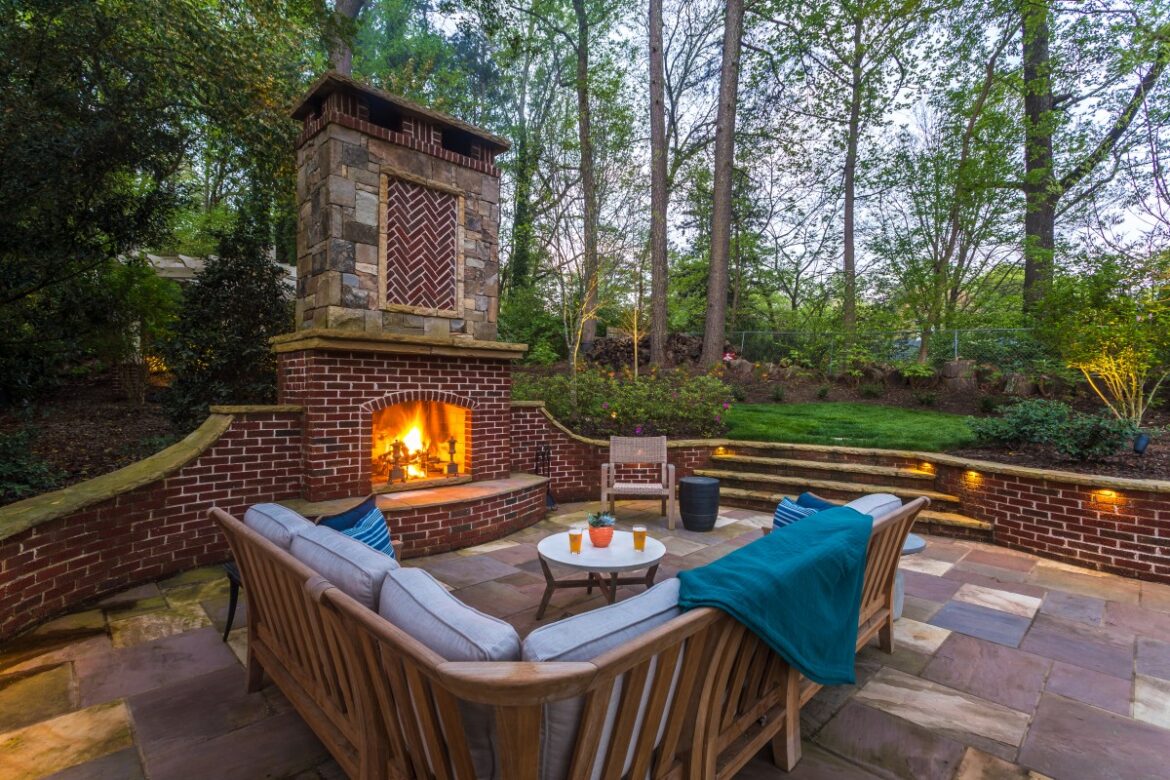The world of landscaping in real estate is undergoing a transformative shift in 2024, with a growing focus on sustainability, technology, and creating outdoor spaces that enhance property value and lifestyle. Both residential and commercial real estate are embracing new trends that prioritize environmental stewardship, smart design, and multifunctional landscapes. Here’s an in-depth look at the latest news and updates shaping the landscaping industry in real estate this year.
1. Sustainable and Eco-Friendly Landscaping
Sustainability remains at the heart of modern landscaping, with a significant push toward eco-friendly practices in 2024. Homeowners and developers are increasingly choosing native plants, xeriscaping (low-water landscaping), and organic gardening techniques to reduce water consumption and promote biodiversity. This approach not only aligns with environmental concerns but also lowers maintenance costs.
Water conservation has become a key factor, particularly in drought-prone regions. Techniques such as rainwater harvesting, the use of permeable pavements, and the installation of drip irrigation systems are becoming more common. These solutions help conserve water and reduce runoff, making properties more resilient and environmentally conscious.
Moreover, sustainable landscaping incorporates recycled materials for walkways, patios, and decks, as well as solar-powered lighting to cut down on energy use. Green roofs and living walls are also being integrated into urban landscapes to combat the heat island effect, making cities more livable and eco-friendly.
2. Edible Landscaping and Urban Farming
One of the biggest trends in 2024 is the rise of edible landscaping, where homeowners and property developers incorporate fruit trees, vegetable gardens, and herb plots into their outdoor spaces. This trend is driven by the growing demand for self-sufficiency and the farm-to-table movement, which encourages people to grow their own food.
Urban farming, once reserved for large plots of land, is now being adapted to smaller, urban spaces. Vertical gardens and raised beds are making it easier to grow food in residential backyards, apartment terraces, and even commercial properties. For developers, integrating edible gardens into shared community spaces adds value by promoting wellness and sustainability, while also creating a sense of community among residents.
3. Technology and Smart Landscaping Solutions
As with many aspects of real estate, technology is revolutionizing landscaping. In 2024, smart landscaping solutions are gaining traction, making outdoor spaces more efficient, eco-friendly, and easier to maintain. Smart irrigation systems that monitor soil moisture levels and weather patterns automatically adjust water usage, ensuring plants receive the right amount of water while conserving resources.
Other tech-driven innovations include robotic lawn mowers, automated garden lighting systems, and sensors that track the health of plants. Property owners are also using landscaping apps to design and manage their gardens virtually, making it easier to visualize and implement their ideas.
Drones are another emerging tool in landscape design, offering aerial views of properties that help contractors plan large-scale projects more effectively. These advancements streamline the design process and enhance the overall efficiency of maintaining landscapes.
4. Outdoor Living Spaces as Extensions of the Home
The trend of creating outdoor living spaces continues to dominate in 2024, with homeowners looking to blur the lines between indoor and outdoor environments. With the ongoing popularity of hybrid living and working from home, outdoor spaces are now being designed as extensions of the home, offering functionality beyond traditional gardening.
These spaces often include outdoor kitchens, fire pits, lounges, dining areas, and even full-scale entertainment setups. Pergolas, gazebos, and retractable canopies are used to provide shade and shelter, allowing for year-round use of outdoor areas. In warmer climates, these outdoor rooms often come equipped with cooling systems, while in colder regions, heating elements like fire tables or infrared heaters extend the usability of the space.
This trend enhances the lifestyle appeal of properties, making them more attractive to buyers looking for multifunctional spaces where they can relax, entertain, and work comfortably.
5. Native and Drought-Resistant Plants
As climate change continues to affect weather patterns, property owners are turning to native plants and drought-resistant species that are better suited to local conditions and require less water and care. In 2024, there’s a renewed emphasis on selecting plants that thrive naturally in a given region, reducing the need for excessive watering, fertilizers, and pesticides.
These low-maintenance landscapes are not only environmentally friendly but also cost-effective in the long term. Popular drought-resistant plants include succulents, lavender, ornamental grasses, and a variety of wildflowers that attract pollinators like bees and butterflies, contributing to the local ecosystem.
For commercial properties and public spaces, native and drought-tolerant landscapes are becoming a way to meet environmental regulations while enhancing the aesthetic appeal of the property. This shift aligns with broader sustainability goals in the real estate industry, making properties more attractive to eco-conscious buyers and tenants.
6. Multifunctional Green Spaces in Urban Development
As urban areas become denser, the importance of green spaces in real estate developments is becoming more apparent. In 2024, urban planners and developers are incorporating multifunctional green spaces into projects to enhance community well-being and support biodiversity.
These spaces are designed to serve multiple purposes, including recreation, stormwater management, and environmental education. For example, parks may include walking trails, playgrounds, rain gardens, and outdoor fitness areas, all designed to encourage active lifestyles and community interaction. In commercial real estate, green spaces such as rooftop gardens, courtyards, and green walls are being used to provide employees and visitors with calming, productive environments.
For residential projects, shared green spaces are a key selling point, offering amenities like community gardens, dog parks, and social gathering areas. These spaces not only improve property values but also contribute to residents’ quality of life, making them an essential part of modern urban design.
7. Climate-Resilient Landscapes
In response to the growing threat of climate change, climate-resilient landscapes are becoming more prevalent in real estate. Property owners and developers are increasingly focused on designing landscapes that can withstand extreme weather events, such as floods, hurricanes, and wildfires, without suffering significant damage.
These landscapes often incorporate flood-resistant plants, rain gardens, and permeable surfaces that allow water to drain more effectively during heavy rainfall. In wildfire-prone areas, fire-resistant plants and strategically placed firebreaks are being used to minimize the risk of property damage.
In coastal regions, salt-tolerant plants and erosion-control measures are being implemented to protect properties from rising sea levels and storm surges. By focusing on resilience, property owners can not only protect their investments but also reduce long-term maintenance costs.
8. Biophilic Design and Connection to Nature
The concept of biophilic design, which emphasizes the human connection to nature, is becoming increasingly popular in landscaping. In 2024, biophilic design principles are being used to create calming, restorative outdoor environments that enhance well-being and mental health.
Landscapes designed with biophilia in mind often feature natural materials, water elements, and abundant greenery. These spaces are intended to foster a sense of tranquility and provide a respite from the stresses of urban life. In commercial real estate, biophilic design is particularly effective in enhancing employee productivity and well-being, making it a valuable feature for office buildings and corporate campuses.
In residential developments, biophilic design can be seen in the use of natural elements such as stone pathways, water features like fountains or small ponds, and lush plantings that mimic natural ecosystems. These designs create harmonious spaces that appeal to homebuyers seeking a connection to nature within their living environments.
Conclusion
The landscaping trends of 2024 reflect a deepening integration of sustainability, technology, and multifunctionality in real estate. Whether through eco-friendly gardens, smart irrigation systems, or outdoor living spaces that enhance daily life, landscaping has become a key element in shaping property value and appeal. As the industry continues to evolve, property owners, developers, and designers will increasingly focus on creating landscapes that not only beautify spaces but also address environmental challenges and improve quality of life.
From climate-resilient gardens to smart landscapes that use cutting-edge technology, the future of landscaping in real estate is both innovative and sustainable. As these trends continue to grow, outdoor spaces will play an even more significant role in shaping the overall success of residential and commercial properties.

